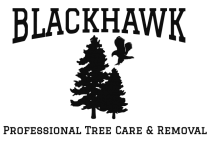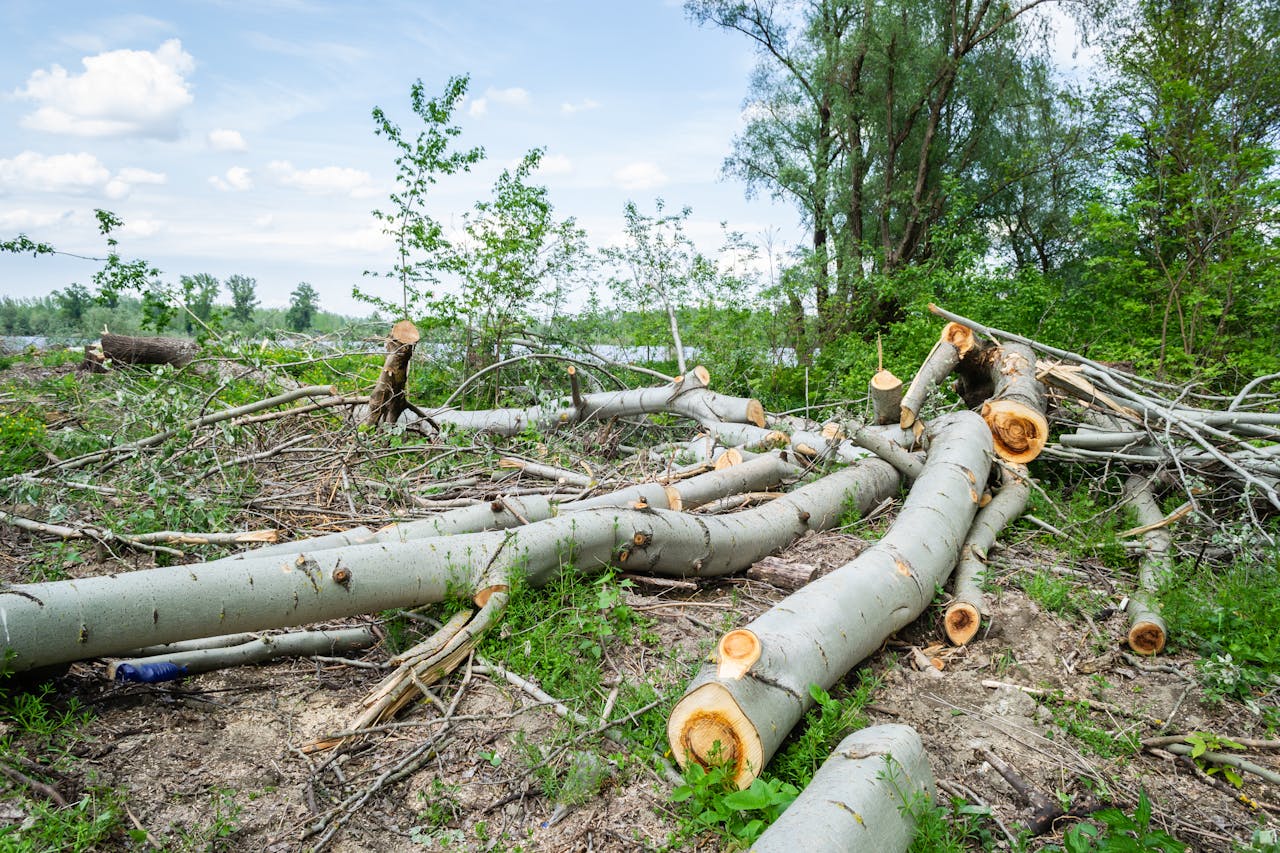As a tree removal and pruning service company, Blackhawk Tree Services understands the critical role that proper tree maintenance plays in minimizing risks and promoting safety for homeowners and businesses alike. When hurricane season arrives each year, it’s crucial to be well-prepared and proactive in securing your surroundings. In this article, we will explore the importance of tree maintenance and its direct impact on hurricane preparedness. Learn about expert insights and time-tested practices that will help you to fortify your trees against the forces of nature. These essential measures will help you protect your loved ones and your property.
Understanding Hurricane Season Risks for Trees
On the East Coast, hurricane season is typically around June to November. While it’s still very early, the team at TropicalStormRisk.com is predicting an active hurricane season for 2024, which is why it is helpful to be well-informed about the potential risks that these powerful storms pose to our trees and surroundings. At Blackhawk Tree Services, we prioritize the safety and well-being of our local community, and that starts with understanding the vulnerabilities that hurricane-force winds present to our landscapes.
Hurricanes pose several risks for trees and landscapes, as the powerful forces unleashed during these storms can have devastating effects on the natural environment.
Key Hurricane Risks
Wind Damage: Hurricanes bring strong winds that can break branches, uproot trees, and topple entire trees, causing significant damage to the tree structure.
Uprooting: The force of hurricane winds can uproot trees, especially those with shallow or weakened root systems, leading to tree loss and potential damage to surrounding structures.
Flooding and Waterlogging: Excessive rainfall and storm surges can lead to waterlogged soil, which weakens tree root systems and increases the risk of uprooting or tree instability.
Soil Erosion: Heavy rainfall and flooding can erode soil around tree roots, leading to soil instability and potential tree instability or uprooting.
Canopy Damage: High winds can strip leaves and smaller branches from trees, reducing their ability to photosynthesize and recover after the storm.
Debris Impact: Flying debris during hurricanes can cause physical damage to trees, leading to broken branches or trunk damage.
Saltwater Intrusion: For coastal areas, storm surges can bring in saltwater, which is harmful to many tree species, causing leaf damage and eventually leading to tree decline or death.
Structural Damage: Falling trees or branches can damage buildings, vehicles, and other structures, posing risks to property and human safety.
Fungal and Bacterial Infections: Open wounds or damage on trees can create entry points for pests, fungi, and bacteria, leading to infections and disease.
Habitat Disruption: Hurricanes can lead to the destruction of natural habitats, affecting wildlife that depend on trees for shelter and food.
The Role of Tree Maintenance in Community Safety
At Blackhawk Tree Services, we recognize that safeguarding our neighborhoods begins with understanding the vital role tree care plays in mitigating risks. Proactive tree pruning and maintenance serves as a formidable defense against potential damages from hurricanes. Through regular tree pruning, trimming, and inspection, we can fortify our trees, enhancing their health and structural integrity. But the benefits don’t end there – by embracing proper mulching and soil care techniques, we foster a stable foundation for our trees, bolstering their resilience against hurricane winds.
Tree Maintenance Techniques
Regular Pruning: Pruning removes weak, dead, or overhanging branches, reducing the risk of them breaking off during high winds.
Crown Thinning: Thinning the crown of the tree by selectively removing branches helps reduce wind resistance and minimizes the likelihood of the tree being uprooted.
Crown Reduction: Reducing the size of the tree’s canopy can make it more wind-resistant and prevent excessive stress on branches during hurricanes.
Structural Pruning: Proper structural pruning during the tree’s early years promotes a strong and stable framework, making it less prone to storm damage.
Remove Hazardous Trees: Identifying and removing hazardous trees with structural issues or signs of decay can prevent them from becoming a threat during hurricanes.
Check for Pests and Diseases: Regularly inspecting trees for signs of pests or diseases and taking appropriate measures to address them can improve tree health and resilience.
Soil Aeration and Mulching: Aeration improves soil drainage, reducing the risk of waterlogged soil during heavy rainfall. Mulching helps retain soil moisture and regulates soil temperature. Learn more about the right way to mulch around your trees.
Proper Watering: Adequate watering before and after hurricanes helps maintain tree health and reduce stress during extreme weather conditions.
Install Sturdy Support Systems: For larger or vulnerable trees, installing support systems like cabling and bracing can add extra stability during high winds.
Tree Selection: Choosing wind-resistant tree species and planting them in suitable locations can enhance their ability to withstand hurricane forces.
Create Windbreaks: Planting windbreaks such as shrubs or hedges can provide additional protection to trees from strong winds.
Root Zone Protection: Avoid soil compaction and construction activities near the root zone of trees to maintain a healthy root system.
Engaging the Community in Tree Maintenance
Engaging the community in tree maintenance is a collaborative effort that fosters a sense of ownership and responsibility for the environment. Here are some effective ways to encourage community involvement in tree care:
Tree Care Workshops and Events: Organize workshops and community events focused on tree care and maintenance. These can include hands-on pruning demonstrations, tree planting events, or educational seminars on tree health and care. Involve local experts, arborists, or tree care professionals to lead the sessions and provide valuable insights.
Tree Adoption Programs: Implement tree adoption programs, where community members can “adopt” a tree and take responsibility for its care and maintenance. This personal connection can encourage individuals to become more invested in the well-being of their adopted trees.
Tree Care Awareness Campaigns: Launch awareness campaigns highlighting the importance of tree care and its impact on the community. Utilize social media, flyers, and community notice boards to spread the message and encourage participation. Speak with your neighbors about working with tree care professionals throughout the year to help maintain their trees. Blackhawk Tree Services takes great pride in working with our local community to provide expert tree care.
Seek Local Sponsorships: Partner with local businesses, organizations, or government agencies to sponsor tree care initiatives. Sponsorships can provide funding, equipment, or resources to support community tree care efforts.
Understanding Insurance Coverage for Tree Damage
Many homeowners assume that their insurance will cover any damage from fallen trees or debris from trees, including tree removals and repairs to any structures that have been damaged. Every insurance company is different with different policy restrictions and limitations. It is important to understand the ins and outs of your own unique policy to help avoid unexpected costly bills.
It is best practice to provide the proper tree care and maintenance throughout the year to help avoid damage from trees and landscape debris in the event of a natural disaster. This can ultimately save you money, time and the potential loss of sentimental items.
Identifying and Addressing Hazardous Trees
Identifying hazardous trees is one of the most important steps in ensuring the safety of people and property in your surroundings. Here are some tips to help you recognize potential tree hazards:
Leaning Trunk: Trees with a significant lean can be hazardous, especially if the lean is towards a structure or high-traffic area. Leaning trees may indicate root damage, soil erosion, or other stability issues.
Cracks or Splits: Visible cracks or splits in the trunk or major branches can indicate structural weakness and potential failure during storms or high winds.
Dead or Dying Branches: Dead or dying branches are prone to breaking and falling, posing a risk to people and property below.
Root Damage: Look for signs of root damage, such as exposed or upturned roots, soil heaving, or soil erosion around the base of the tree.
Fungal Growth: Fungal growth, mushrooms, or conks on the trunk or branches could be indicative of internal decay, weakening the tree’s structure.
Insect Infestations: Severe insect infestations can weaken a tree’s health and make it susceptible to failure during storms.
Hollow Trunk: A hollow or decayed trunk can significantly compromise a tree’s strength and stability.
Canopy Imbalance: A lopsided or imbalanced canopy may indicate significant structural issues, making the tree more vulnerable to wind damage.
Signs of Previous Damage: Trees that have experienced previous damage, such as broken limbs or trunk wounds, may be weakened and more likely to fail in the future.
Proximity to Structures: Trees located too close to buildings, power lines, or other structures may become hazardous if they fall or drop branches.
Overhanging Limbs: Overhanging limbs that are dead, dying, or too close to structures can pose a risk during storms or high winds.
Sudden Changes in Appearance: If a tree suddenly exhibits changes in appearance, such as wilting leaves or significant dieback, it could be a sign of an underlying problem.
Regularly inspect the trees on your property and seek professional evaluation if you notice any of these hazardous signs. Certified arborists and tree care professionals can assess the health and safety of your trees and recommend appropriate actions to address potential hazards. Blackhawk Tree Services gladly offers tree estimates to help you identify and correct these hazards.
Hire a Professional for Tree Maintenance for Hurricane Preparedness
Remember, it’s important to plan ahead of hurricane season and work with arborists who specialize in caring for all species of trees and are knowledgeable about each tree’s unique needs and optimal environment. They have expert training and professional equipment to provide trees with proper care. Hiring a licensed and certified arborist is a small investment into your property that leads to substantial returns over the years. With proper care, you can avoid large unexpected bills from damage caused by decaying or dying trees. Working with arborists for the health and care of your trees also saves you a lot of time. You no longer need to take the time to learn about each tree type, how much to water, what fertilizer to use, when to prune, how much to prune, etc. You can spend your time enjoying your outdoor space with friends and family instead of working to maintain it.
Choose BlackHawk Tree Services professionals to care for the health and success of your trees. For over 40 years, we have provided tree care and removal services for homeowners and businesses throughout Raleigh and the Research Triangle area, including Apex, Morrisville, Cary, Fuquay-Varina, and Holly Springs. BlackHawk is a full-service tree service provider that is fully licensed and insured to handle anything from pruning to health and risk assessments, tree removal, emergency services, stump grinding, and beyond.

